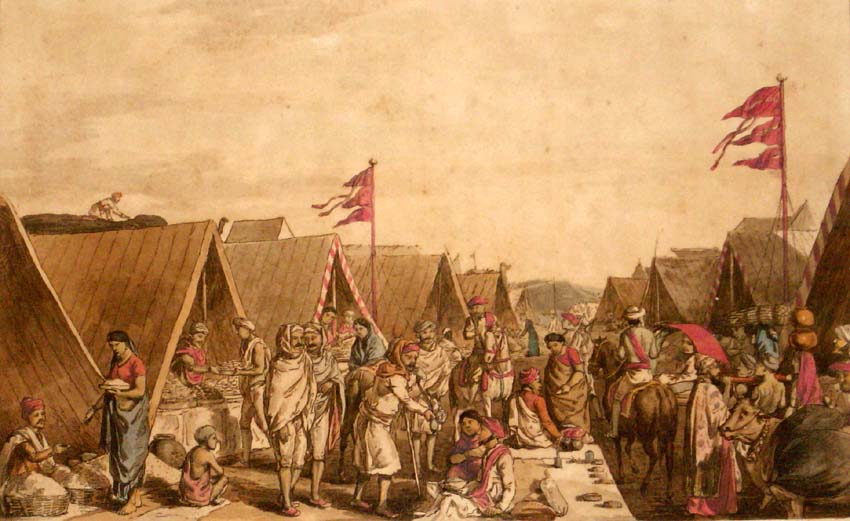

"A Bazaar in Seendhiya's Camp," by J. A. Atkinson, London, 1813
Source: ebay, Oct. 2004
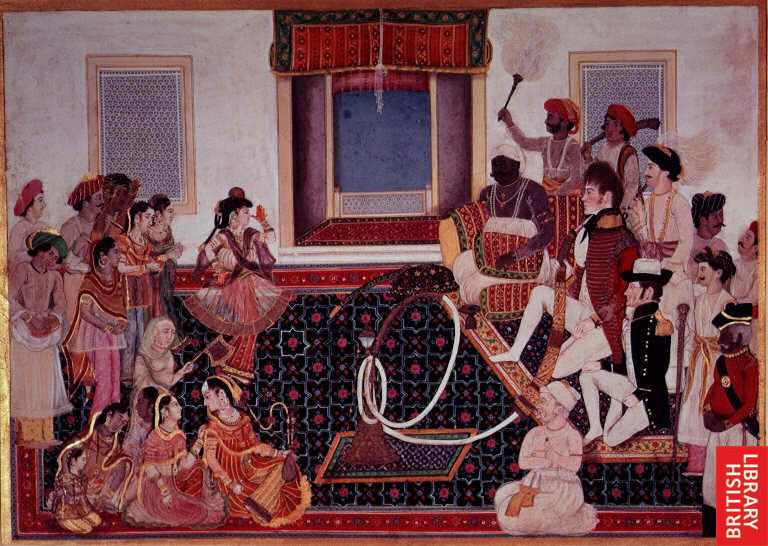
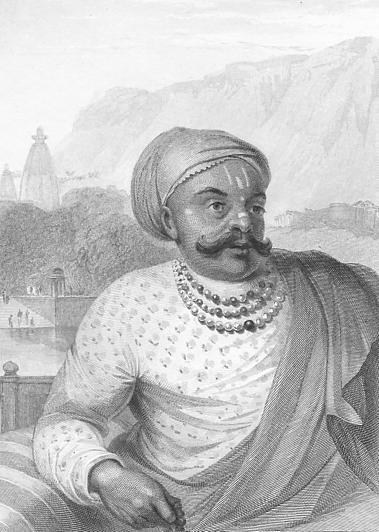
"Mahadajee Scindia," steel engraving of the Maratha chieftain, 1834, by Daniell and Taylor
Source: ebay, Aug. 2002
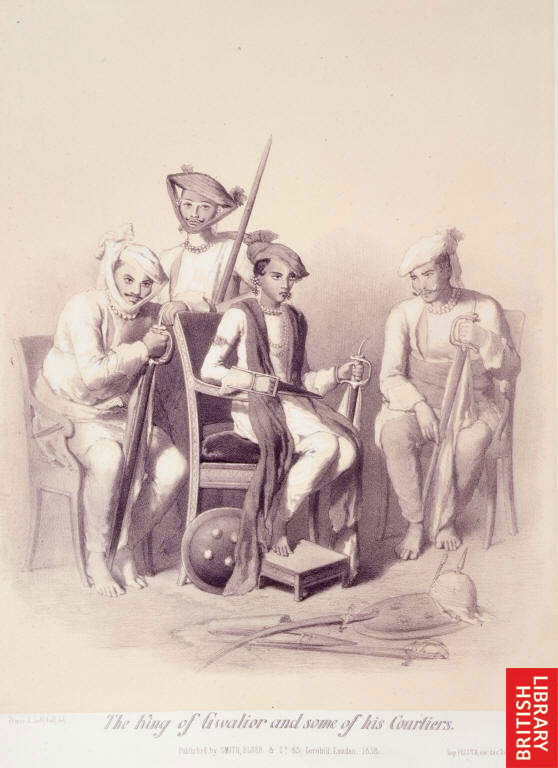

"His Highness Sayaji Rao Sindia, Maharaja of Gwalior," an engraving, 1875
Source: ebay, Nov. 2006
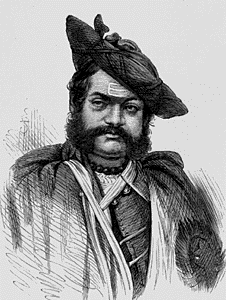
"The Maharajah Scindia of Gwalior" (r.1843-1886) as seen in the Illustrated London News, 1875
Source: http://www.harappa.com/engr/gwalior.html
(downloaded Nov. 1999)
From a longer story on the Prince of Wales's visit to India in 1875:
"Another great native Prince, whose portrait we engrave, is Jyajee Rao Scindia, Maharajah of Gwalior. It has been observed on a former occasion, when speaking of the Maharajah Holkar of Indore, that these Maharatta potentates of Western India are now valuable allies of the British Government. Scindia was overthrown in the Sepoy War of 1858, by a rebellion headed by Tantia Topee and the Dowager Princess of Jhansi, at the instigation of the Nana Sahib. He was restored by the British force under Sir Hugh Rose, now Lord Strathnairn, who stormed the rock-fortress of Gwalior. The Maharattas, till their defeat by Lord Lake and other British commanders, at the beginning of this century, possessed the greater part of the Deccan, and Poonah was the capital of their dominion."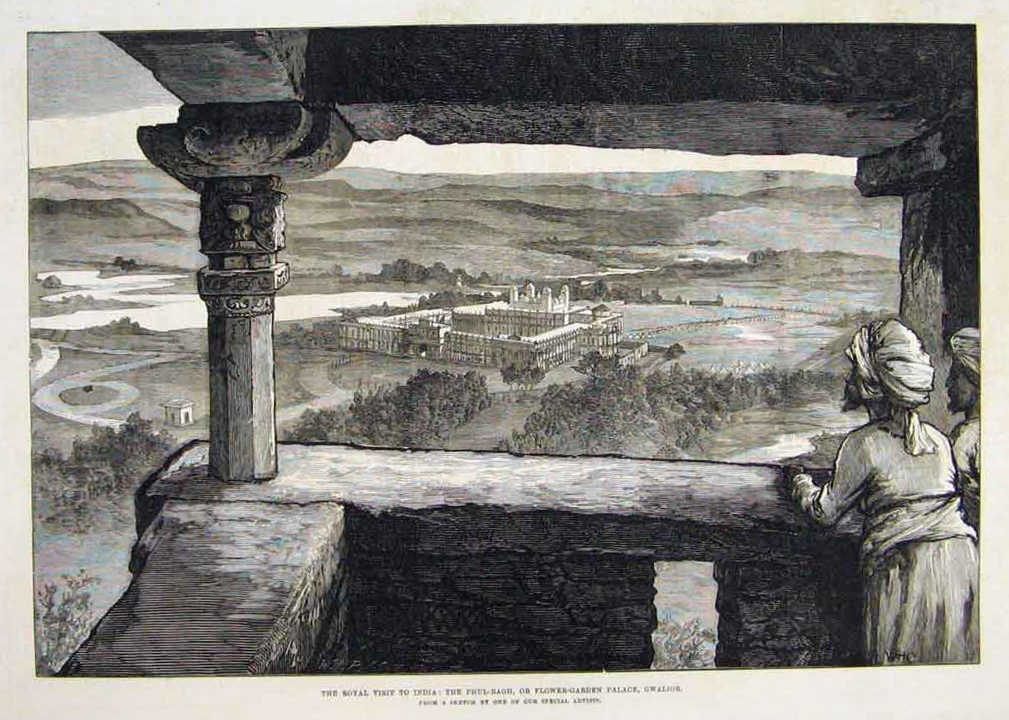
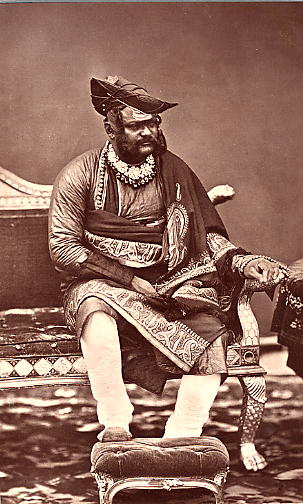
Another view of the Maharajah: a photo by Talboys Wheeler from 'The Imperial Assemblage', 1877
Source:
http://www.asianartresource.co.uk/mall/asianartresourcecouk/products/product-1046915.stm
(downloaded July 2004)
*The Viceroy presents the Maharajah with an imperial banner, from The Graphic, 1877*
Source: ebay, Oct. 2005
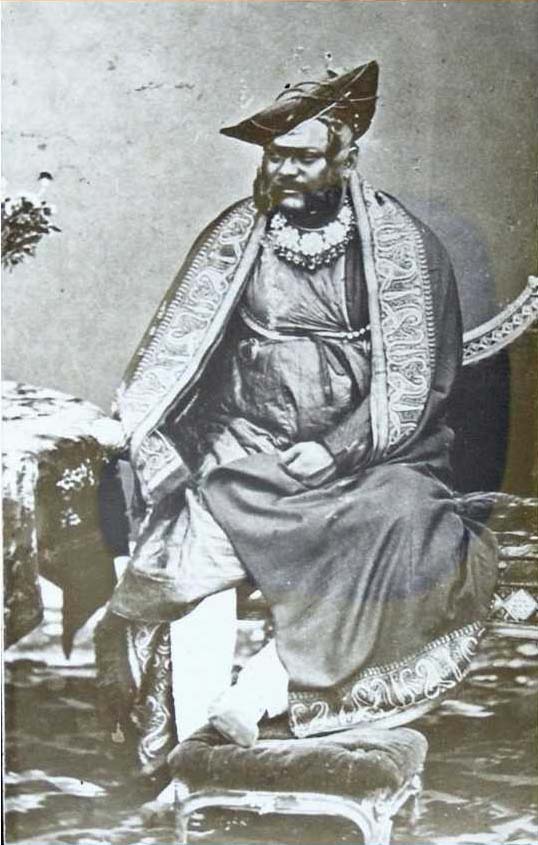

== Indian Routes index == Indian Routes sitemap == Glossary == FWP's main page ==